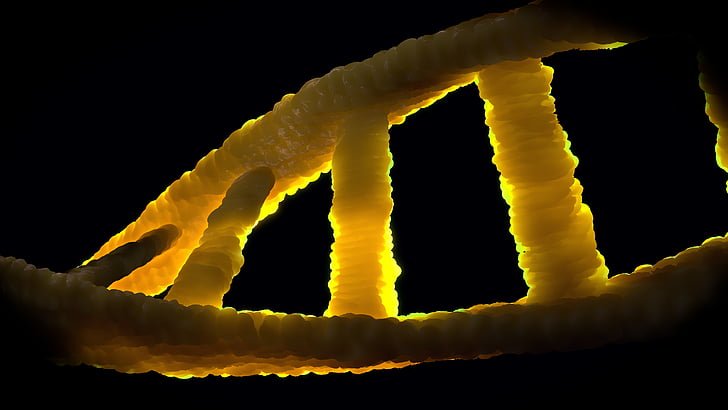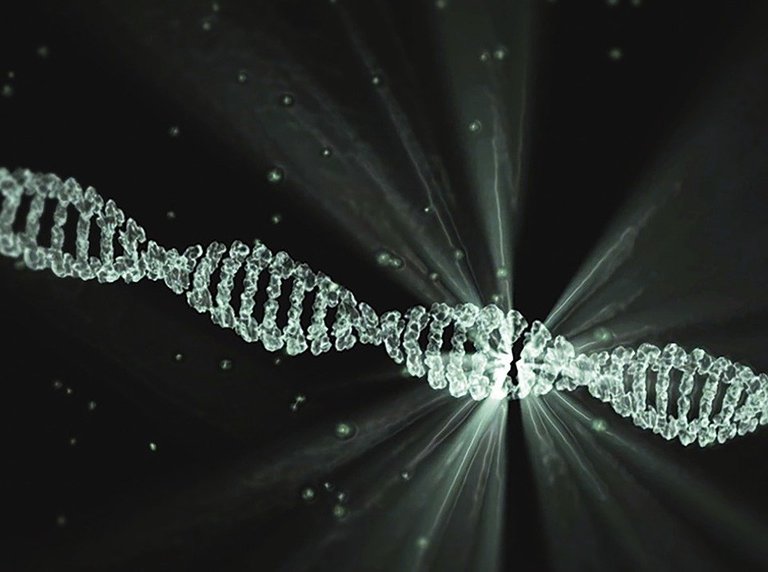DNA in a Layman's Language
I am sure that somehow, somewhere you have heard about DNA. The acronym DNA stands for deoxyribonucleic acid. That is pretty long, isn’t it? Our DNA, in layman's terms, is a molecule whose function is to hold and replicate information about our traits and features. This information is incredibly vital as it is the entire basis of our existence and determines who we are
What is DNA?
A DNA strand is a biological molecule made up of two polynucleotides, facing opposite directions and wound around each other to form a double helix shape. The word polynucleotide means many nucleotides. Each nucleotide is made up of a pentose sugar, a phosphate group, and a nitrogenous base. These two chains are linked together by hydrogen bonds between the nitrogenous bases.

How does DNA work?
Your DNA is vital for cell division and protein synthesis. Protein synthesis is one of the most important processes in a human cell. This is because the enzymes which control all the chemical reactions in your body and therefore cellular activities are proteins. Before these enzymes can be synthesized, your DNA has to unwind.
The gene (which is a length of DNA that codes for a particular protein) that is required is copied by a messenger RNA molecule in a process known as transcription. The copy of the gene made is complementary to one strand of the DNA molecule.
After transcription, the messenger RNA molecule moves out of the nucleus into the cytoplasm to be translated. This is done by a ribosome in the cytoplasm. The translated messenger RNA molecule is then used to form the required protein.
How does DNA pass on traits?
The inheritance of traits is based solely on our DNA. When a zygote is formed with two sex cells from one female and one male individual, it is usually composed of the DNA of both parents. The sequence formed by the bases on DNA strands of different individuals are unique and vary greatly.
These differences ensure that the proteins that are coded for by the genes are of great variety.
When cells undergo meiosis to become gametes, the DNA of each parent is passed on in the gametes to their offspring. This is how information is passed on from generation to generation.
How your DNA is responsible for growth
Before any cell can divide, it must receive a signal. This signal itself is sent by genes that are part of your DNA. Next, the DNA of the cell about to undergo mitosis and must be replicated so that both the cells have a complete set of chromosomes.
Other structures such as mitochondria and ribosomes are also duplicated. All of these processes are initiated by your DNA as it contains all the information for the synthesis of the enzymes and signaling required for them to take place.
DNA and reproduction
Your DNA is very important when it comes to reproduction. First, the egg and sperm cells are formed with half the number of chromosomes required in normal cells. This is because when both cells fuse and form a zygote, the number of chromosomes has to be maintained from generation to generation.
This is why gametes go through a separate process when they are synthesized. Meiosis leads to the formation of both male and female gametes. DNA is transferred to your offspring in these gametes so that it can also use the
DNA for vital processes
DNA and diseases
Quite a lot of severe conditions can be caused by a slight mutation or change in the base sequence of our DNA. One such example is the sickle cell allele for the blood group.
A change in the base sequence of the gene coding from glutamic acid to valine results in a faulty protein. This leads to the formation of red blood cells shaped like a sickle. These red blood cells get stuck in arteries and cause blockage. This can pose a serious health risk in people who have both genes coding for the HBss protein.
Another more common example is cancer. Cancer is caused by a mutation of the gene that controls cell division. This gene, known as the proto-oncogene changes to an oncogene. It is probable for a cell that has undergone such a change to be destroyed by the immune system.
However, if this does not happen, the cell continues to live and divides without any signal. This cell passes on its mutation to its descendants and together, they begin to form a mass known as a tumour.
Important uses of DNA to a layman
I am sure just about anyone who does not live under a rock knows what DNA testing is. When DNA is extracted, it has a great many uses and has lead to several breakthroughs. Here are some of them:
DNA fingerprinting: DNA fingerprinting is based on the differences between certain sections of DNA that vary from person to person. These sections are known as VNTR regions. When DNA is extracted from an individual, its quantity is increased using the polymerase chain reaction.
Restriction enzymes that cut DNA at these VNTR regions are used on the DNA. The DNA then undergoes a process known as electrophoresis which separates the fragment in a gel so they end at different positions.
These positions are transferred onto a piece of film so they can be examined easily. If fingerprinting is being used for a crime scene, the patterns formed by the DNA found are compared with that of the suspects to ascertain the culprit.
Genetic technology: genetic technology makes use of the extraction of DNA from individuals that are unaffected by a particular ailment to synthesize products that are useful for curing the ailment. An example is the production of insulin for people affected by type one diabetes.
The gene for the synthesis of insulin is extracted from normal individuals and is inserted into bacteria. The transformed bacteria are can now produce insulin so they are grown in large fermenters. The insulin produced by the bacteria is extracted and purified so that it can be sold to people who suffer from type one diabetes.

There are, of course, several other uses of DNA to scientists and the everyday man. I just decided to limit my post to the mentioned few. Other uses worthy of being mentioned include vaccine production, ancestry tracking, etc. I hope your knowledge has been increased by the little information shared about the DNA
Thank you for reading.
References
- https://en.wikipedia.org/wiki/DNA
- https://en.wikipedia.org/wiki/DNA_profiling
- https://www.livescience.com/37247-dna.html
- https://www.nature.com/scitable/topicpage/replication-and-distribution-of-dna-during-mitosis-6524841/
- https://blogs.scientificamerican.com/a-blog-around-the-clock/bio101-from-one-cell-to-two-cell-division-and-dna-replication/
- https://www.revsci.com/blogs/biotechnology/common-uses-for-dna-extraction
Thanks for your contribution to the STEMsocial community. Feel free to join us on discord to get to know the rest of us!
Please consider supporting our funding proposal, approving our witness (@stem.witness) or delegating to the @stemsocial account (for some ROI).
Please consider using the STEMsocial app app and including @stemsocial as a beneficiary to get a stronger support.